Urban Purple Corn Growing might sound like something out of a science fiction novel, but trust me, it’s a surprisingly achievable and incredibly rewarding project for any home gardener, even if you’re short on space! Forget those sprawling fields of yellow corn; we’re talking about bringing a touch of vibrant, ancient history right to your balcony, patio, or even a sunny windowsill.
For centuries, purple corn has been a staple in the Andean regions of South America, revered not only for its unique color but also for its potent antioxidant properties. Imagine impressing your friends and family with homemade purple corn tortillas, vibrant purple cornmeal, or even a refreshing glass of chicha morada, a traditional Peruvian beverage. But beyond the culinary delights, growing your own purple corn connects you to a rich cultural heritage and a sustainable food source.
Why should you embark on this urban purple corn growing adventure? Well, for starters, it’s a fantastic way to add a splash of color and intrigue to your garden. More importantly, in a world where we’re increasingly conscious of where our food comes from, growing your own produce offers unparalleled control over quality and freshness. Plus, let’s be honest, there’s something incredibly satisfying about nurturing a plant from seed to harvest. This DIY guide will walk you through every step, from selecting the right seeds and containers to troubleshooting common problems, ensuring you can enjoy the unique beauty and flavor of purple corn, no matter where you live. So, grab your gardening gloves, and let’s get started!
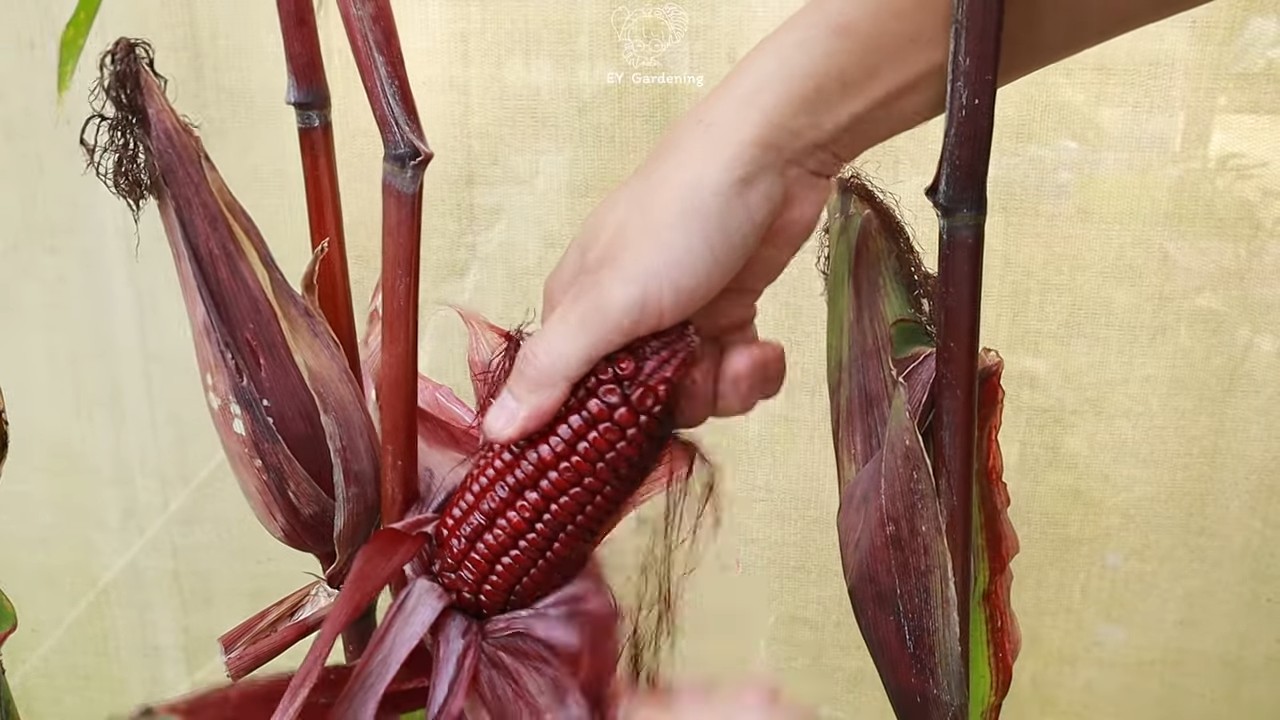
Growing Urban Purple Corn: A DIY Guide to a Vibrant Harvest
Hey there, fellow gardening enthusiasts! Ever dreamt of adding a splash of vibrant color and unique flavor to your urban garden? Well, get ready to ditch the ordinary and embrace the extraordinary with purple corn! It’s surprisingly easy to grow, even in limited spaces, and the results are absolutely stunning. I’m going to walk you through everything you need to know to cultivate your own patch of purple goodness.
Choosing the Right Purple Corn Variety
Before we dive into the nitty-gritty, let’s talk about varieties. Not all purple corn is created equal! Some are better suited for certain climates and purposes than others. Here are a few popular options:
* ‘Blue Hopi’: This is a classic choice, known for its deep purple kernels and drought tolerance. It’s a great option if you live in a drier climate.
* ‘Cherokee Purple’: While technically a dent corn, it boasts beautiful purple hues and is often used for making cornmeal.
* ‘Oaxacan Green’: Don’t let the name fool you! While the stalks and husks are green, the kernels are a striking mix of purple, blue, and black.
* ‘Violetta’: A shorter variety, making it ideal for container gardening. It produces ears with vibrant violet kernels.
Consider your climate, available space, and intended use (eating fresh, making cornmeal, etc.) when making your selection. I personally love ‘Blue Hopi’ for its resilience and beautiful color.
Preparing Your Urban Corn Patch
Okay, now that you’ve chosen your variety, let’s get your garden ready!
* Sunlight is Key: Corn needs at least 6-8 hours of direct sunlight per day. Choose the sunniest spot in your garden or balcony.
* Soil Preparation: Corn is a heavy feeder, so rich, well-draining soil is essential. Amend your soil with plenty of compost or well-rotted manure. Aim for a slightly acidic to neutral pH (around 6.0-7.0).
* Container Gardening (If Applicable): If you’re growing in containers, choose large pots (at least 12-18 inches in diameter) to accommodate the corn’s root system. Use a high-quality potting mix.
* Wind Protection: Corn stalks can be tall and susceptible to wind damage. If your garden is exposed to strong winds, consider providing some support, such as staking or planting near a fence.
Planting Your Purple Corn
Alright, time to get those seeds in the ground!
1. Timing is Everything: Plant your corn seeds after the last frost, when the soil has warmed up to at least 60°F (15°C).
2. Direct Sowing: Corn doesn’t transplant well, so direct sowing is the best method.
3. Spacing: Plant seeds 1-2 inches deep and 6-12 inches apart in rows. If you’re planting in containers, plant 2-3 seeds per pot and thin to the strongest seedling.
4. Watering: Water thoroughly after planting. Keep the soil consistently moist, but not waterlogged, until the seedlings emerge.
5. Succession Planting (Optional): To extend your harvest, consider succession planting. Plant a new batch of seeds every 2-3 weeks for a continuous supply of purple corn.
Caring for Your Growing Corn
Now that your corn is planted, it’s time to nurture it and watch it grow!
* Watering: Corn needs consistent moisture, especially during tasseling and silking (when the tassels and silks appear). Water deeply whenever the top inch of soil feels dry.
* Fertilizing: As I mentioned, corn is a heavy feeder. Fertilize every 2-3 weeks with a balanced fertilizer or a nitrogen-rich fertilizer. I like to use fish emulsion or compost tea.
* Weeding: Keep the area around your corn plants free of weeds, which can compete for nutrients and water.
* Pollination: Corn is wind-pollinated, so planting in blocks rather than rows will improve pollination rates. You can also hand-pollinate by gently shaking the tassels to release pollen onto the silks.
* Pest Control: Keep an eye out for common corn pests like corn earworms, aphids, and Japanese beetles. Use organic pest control methods, such as insecticidal soap or neem oil, if necessary.
* Supporting Stalks: As your corn stalks grow taller, they may need support, especially if they’re exposed to wind. Use stakes or trellises to prevent them from falling over.
Harvesting Your Purple Corn
The moment you’ve been waiting for! Harvesting your beautiful purple corn.
1. Timing: The time to harvest depends on the variety and your intended use. For fresh eating, harvest when the silks have turned brown and dry, and the kernels are plump and milky when pierced. For cornmeal, allow the ears to dry completely on the stalk before harvesting.
2. Checking for Ripeness: Peel back a portion of the husk and check the kernels. They should be plump and filled with a milky liquid.
3. Harvesting: Twist the ear downward and pull it away from the stalk.
4. Drying (For Cornmeal): If you’re planning to make cornmeal, dry the ears completely by hanging them in a well-ventilated area for several weeks.
Using Your Urban Purple Corn
Now for the fun part: enjoying the fruits (or rather, vegetables!) of your labor.
* Fresh Eating: Purple corn can be eaten fresh, just like regular corn. Grill it, boil it, or roast it for a delicious and colorful side dish.
* Cornmeal: Grind dried purple corn kernels into cornmeal for making tortillas, cornbread, or polenta. The purple cornmeal will add a beautiful hue to your dishes.
* Ornamental Use: The colorful ears can also be used for decorative purposes. Hang them on your porch or use them in fall arrangements.
* Seed Saving: Save seeds from your best ears to plant next year. This will help you develop a strain that is well-suited to your local climate.
Troubleshooting Common Problems
Even with the best planning, you might encounter a few challenges along the way. Here are some common problems and how to address them:
* Poor Germination: Make sure your seeds are fresh and that the soil is warm enough.
* Stunted Growth: This could be due to lack of sunlight, nutrients, or water. Adjust your growing conditions accordingly.
* Pest Infestations: Regularly inspect your plants for pests and take action promptly.
* Poor Pollination: Hand-pollinate if necessary, and ensure that you have enough corn plants for adequate pollination.
* Ears Not Filling Out: This could be due to poor pollination or lack of nutrients. Fertilize and hand-pollinate if needed.
Growing Purple Corn in Containers: A Detailed Guide
If you’re limited on space, growing purple corn in containers is totally doable! Here’s a more detailed breakdown:
1. Choosing the Right Container: Opt for large containers, at least 12-18 inches in diameter and depth. Fabric pots are a great option as they allow for good drainage and aeration.
2. Potting Mix: Use a high-quality potting mix that drains well. Avoid using garden soil, as it can become compacted in containers.
3. Planting: Plant 2-3 seeds per container, 1-2 inches deep. Once the seedlings emerge, thin to the strongest one.
4. Watering: Container-grown corn will dry out more quickly than corn grown in the ground. Water deeply whenever the top inch of soil feels dry. You might need to water daily, especially during hot weather.
5. Fertilizing: Container-grown plants rely entirely on you for nutrients. Fertilize every 2-3 weeks with a balanced fertilizer or a liquid fertilizer like fish emulsion.
6. Sunlight: Place your containers in a location that receives at least 6-8 hours of direct sunlight per day.
7. Support: Container-grown corn may be more susceptible to wind damage. Provide support with stakes or trellises.
8. Pollination: Hand-pollination is especially important for container-grown corn, as there may not be enough wind for natural pollination.
Maximizing Your Purple Corn Yield
Want to get the most out of your purple corn patch? Here are a few tips:
* Choose the Right Variety: Select a variety that is known for its high yields.
* Prepare the Soil Well: Rich, well-draining soil is essential for maximizing yields.
* Provide Adequate Sunlight: Corn needs at least 6-8 hours of direct sunlight per day.
* Water Consistently: Corn needs
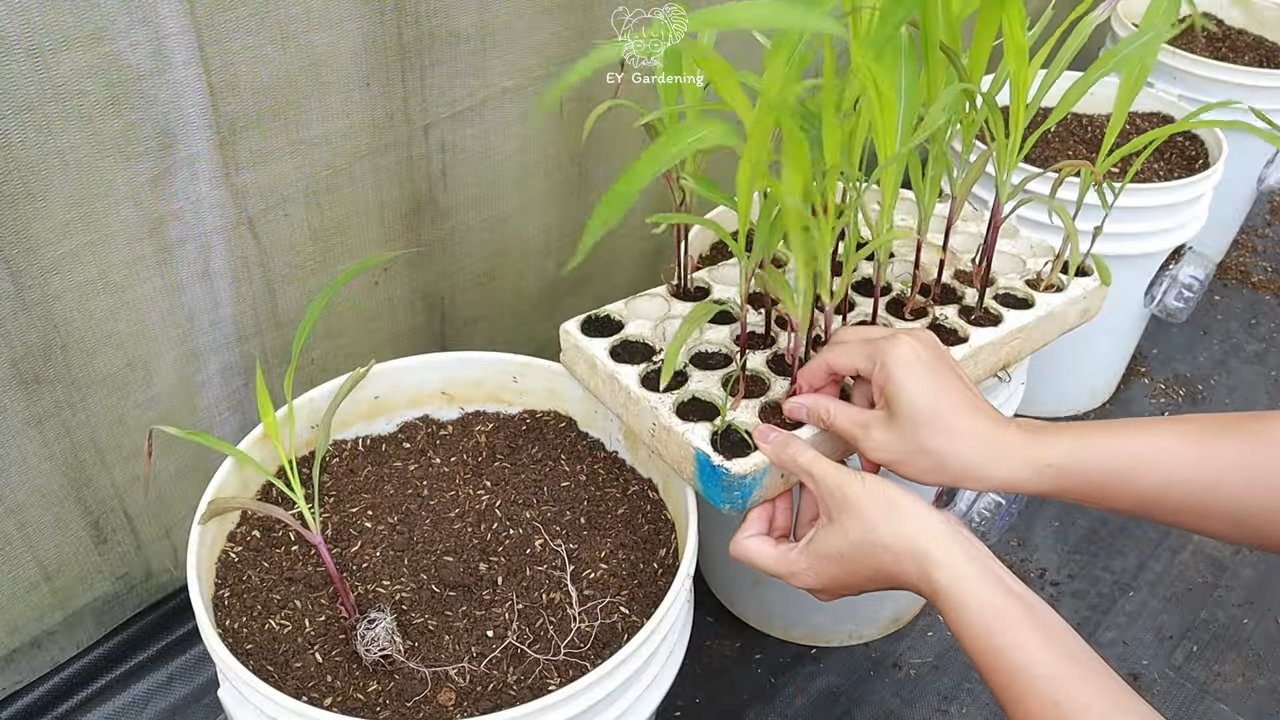
Conclusion
So, there you have it! Growing your own urban purple corn might seem like a whimsical dream, but with a little know-how and dedication, it’s entirely achievable, even in the heart of the city. This isn’t just about adding a splash of vibrant color to your garden; it’s about connecting with the origins of your food, understanding the process from seed to table, and enjoying the unique nutritional benefits that purple corn offers.
Why is this DIY trick a must-try? Because it empowers you to cultivate a rare and beautiful crop that’s often difficult to find in stores. Imagine the satisfaction of harvesting your own ears of deep purple corn, knowing that you nurtured them from tiny seeds. Think of the stunning cornbread, tortillas, or even purple corn flour you can create, adding a touch of exotic flair to your meals. Beyond the culinary delights, growing purple corn is an educational experience, a chance to learn about plant life cycles, soil health, and the importance of biodiversity. It’s also a fantastic conversation starter, a way to share your passion for gardening and sustainable living with friends and neighbors.
But the benefits don’t stop there. Urban gardening, in general, offers a therapeutic escape from the stresses of city life. Tending to your plants, feeling the soil between your fingers, and watching your garden flourish can be incredibly rewarding and calming. Plus, growing your own food reduces your carbon footprint by minimizing transportation and packaging.
Ready to take your urban purple corn growing to the next level? Consider these variations and suggestions:
* Experiment with different varieties: While many purple corn varieties exist, some are better suited for specific climates or growing conditions. Research which varieties thrive in your region and choose accordingly.
* Companion planting: Enhance your corn’s growth and deter pests by planting beneficial companion plants like beans, squash, and sunflowers. The “three sisters” method (corn, beans, and squash) is a classic example of symbiotic planting.
* Vertical gardening: If space is limited, explore vertical gardening techniques. Trellises, stacked planters, or even repurposed pallets can provide ample growing space for your purple corn.
* Seed saving: Once you’ve successfully grown your purple corn, consider saving the seeds for future planting. This ensures a continuous supply of your favorite variety and allows you to adapt the corn to your specific growing conditions over time.
* Purple Corn Recipes: Don’t limit yourself to just cornbread. Explore recipes for purple corn atole, a traditional Mexican drink, or experiment with making purple corn chips or tortillas. The possibilities are endless!
We encourage you to embrace the challenge and embark on your own urban purple corn growing adventure. Don’t be afraid to experiment, learn from your mistakes, and most importantly, have fun! We’re confident that you’ll be amazed by the results.
And now, we want to hear from you! Share your experiences, tips, and photos of your urban purple corn garden with us in the comments below. Let’s create a community of purple corn enthusiasts and inspire others to join the movement. What challenges did you face? What successes did you celebrate? What unique recipes did you create? Your insights can help others navigate their own purple corn growing journey. Let’s grow together!
Frequently Asked Questions (FAQ)
What exactly is purple corn, and why should I grow it?
Purple corn is a variety of corn that gets its vibrant color from high levels of anthocyanins, powerful antioxidants also found in blueberries and other purple fruits and vegetables. Growing it allows you to access these health benefits directly from your garden. It’s also a visually stunning plant, adding a unique aesthetic to your urban garden. Beyond the health benefits and visual appeal, growing purple corn connects you to the rich agricultural history of the Americas, where it has been cultivated for centuries. It’s a chance to grow something truly special and unique.
Is it difficult to grow purple corn in an urban environment?
While it requires some planning and attention, growing purple corn in an urban environment is definitely achievable. The key is to provide the corn with adequate sunlight (at least 6-8 hours per day), well-draining soil, and sufficient space for growth. Container gardening is a viable option for smaller spaces, but be sure to choose large containers to accommodate the corn’s root system. Regular watering and fertilization are also essential for healthy growth. Don’t be discouraged by initial challenges; with a little patience and persistence, you can successfully grow purple corn in your urban garden.
What kind of soil is best for growing purple corn?
Purple corn thrives in well-draining soil that is rich in organic matter. A slightly acidic to neutral pH (around 6.0 to 7.0) is ideal. Before planting, amend your soil with compost, aged manure, or other organic materials to improve its fertility and drainage. If you’re growing in containers, use a high-quality potting mix specifically formulated for vegetables. Regular soil testing can help you monitor the pH and nutrient levels and make necessary adjustments. Remember, healthy soil is the foundation for healthy plants.
How much sunlight does purple corn need?
Purple corn requires at least 6-8 hours of direct sunlight per day to thrive. Choose a location in your garden that receives ample sunlight throughout the day. If you’re growing in containers, you may need to move the containers around to ensure that the corn receives enough sunlight. Insufficient sunlight can result in stunted growth, poor ear development, and reduced anthocyanin production, leading to less vibrant purple kernels.
How often should I water my purple corn?
Water your purple corn regularly, especially during dry periods. The soil should be kept consistently moist but not waterlogged. Check the soil moisture by sticking your finger about an inch deep into the soil. If the soil feels dry, it’s time to water. Avoid overhead watering, as this can increase the risk of fungal diseases. Instead, water at the base of the plants. During hot summer months, you may need to water more frequently.
What are some common pests and diseases that affect purple corn, and how can I prevent them?
Common pests that can affect purple corn include corn earworms, aphids, and spider mites. Diseases include corn smut, leaf blight, and root rot. To prevent these problems, practice good garden hygiene, such as removing weeds and debris that can harbor pests and diseases. Use organic pest control methods, such as insecticidal soap or neem oil, to control pests. Ensure good air circulation to prevent fungal diseases. Rotate your crops each year to prevent soilborne diseases from building up.
How long does it take for purple corn to mature?
The time it takes for purple corn to mature depends on the variety and growing conditions, but it typically takes between 90 and 120 days from planting to harvest. You’ll know the corn is ready to harvest when the silks turn brown and dry, and the kernels are plump and filled with milky liquid. You can also gently peel back the husk to check the kernels.
Can I grow purple corn in a container?
Yes, you can grow purple corn in a container, but you’ll need to choose a large container (at least 15-20 gallons) to accommodate the corn’s root system. Use a high-quality potting mix and ensure that the container has good drainage. Water and fertilize regularly. You may also need to provide support for the corn stalks as they grow taller.
Where can I find purple corn seeds?
Purple corn seeds can be found at many online seed retailers, as well as at some local nurseries and garden centers. Look for reputable seed companies that specialize in heirloom or open-pollinated varieties. Be sure to choose a variety that is well-suited for your climate and growing conditions.
What can I do with my harvested purple corn?
The possibilities are endless! You can use your harvested purple corn to make cornbread, tortillas, polenta, or even purple corn flour. You can also use it to make traditional Mexican drinks like atole or chicha morada. The kernels can also be dried and used for decorative purposes. Get creative and experiment with different recipes to discover your favorite ways to enjoy your homegrown purple corn.

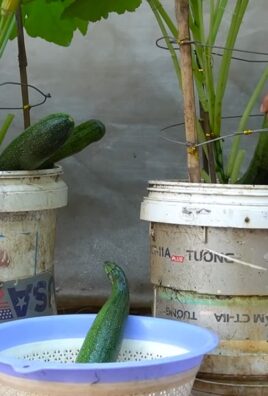
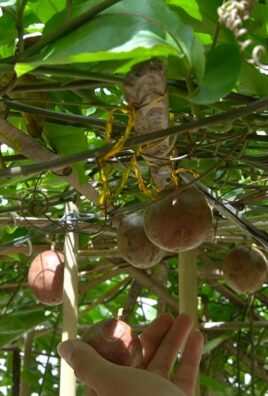
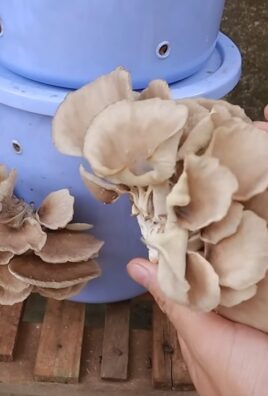
Leave a Comment